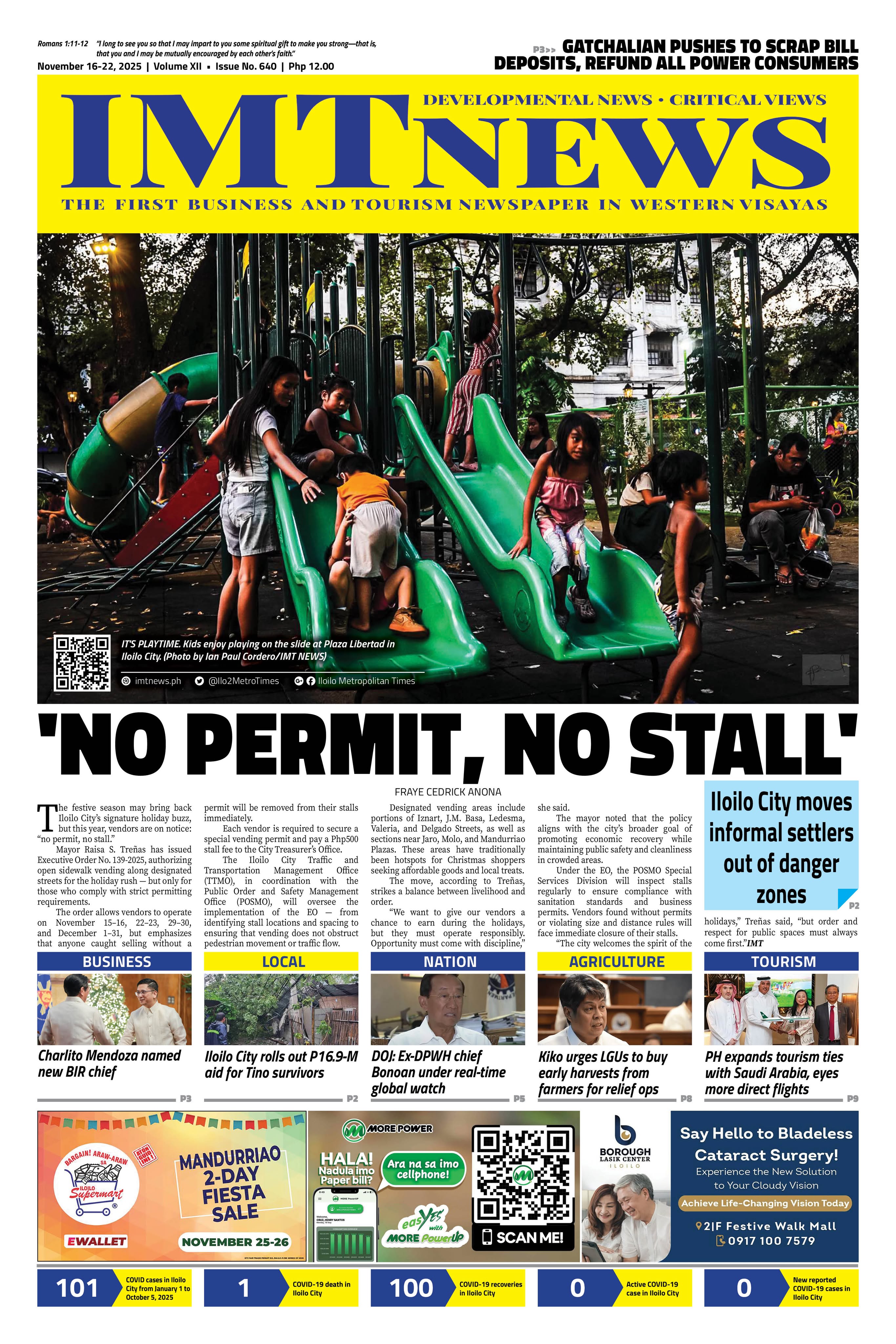There’s a quiet kind of poetry in the vision of an outdoor library, a space where books breathe beneath open skies, waiting to be discovered by curious children, wandering students, or anyone hungry for a story. In theory, it’s a beautiful idea: pages rustling under trees, knowledge woven into the rhythm of daily life. But when that vision isn’t backed by thoughtful planning and long-term commitment, the poetry fades, and what remains is a hollow gesture, a display, not a movement. This is the reality that shadows the recent launch of Iloilo City’s outdoor library at Plaza Libertad. What could have been a powerful step toward the democratization of reading has instead revealed a deeper truth: the city is still unprepared to cultivate a genuine, thriving culture of literacy.
Let’s be blunt: Iloilo City is late to the idea of creative, accessible book spaces. For years now, municipalities across Iloilo province, many of them with fewer resources, have initiated programs that integrate books into community life. In Carles, for example, a community-driven Book Nook has been quietly thriving, offering children a warm, local space for reading. The National Museum in Western Visayas has also sustained a Book Nook with monthly programs, proof that government-led literacy efforts can be both consistent and meaningful when grounded in real community engagement.
Which is why it’s puzzling and frankly disheartening that Iloilo City, with all its cultural capital and resources, has only now thought of setting up an outdoor library. And even then, the execution reveals a project not yet rooted in a sincere educational mission, but perhaps in something more superficial.
I went to Plaza Libertad with the intention of donating books—local books, children’s books, the kind of stories written by Filipinos that could speak directly to Ilonggo kids. But by 4:00 p.m., the outdoor library was already closed. Inaccessible. There was no indication of operating hours, no visible staff, and no signs suggesting when or how the public could interact with the space.
This single moment spoke volumes. An outdoor library, by its very nature, should be open, visible, and inviting. It should live in public space. But instead, what we saw was a structure designed more for the launch than for the lives of the people it’s meant to serve.
When governments build libraries without committing to the everyday reading lives of communities, what we end up with is symbolic literacy—the illusion of progress without the substance to support it. In this case, there was no visible programming, no reading activities, no librarians or facilitators, and no signage to guide the public on how the space should be used. It’s hard not to ask: was this outdoor library truly built to serve the people, or was it designed primarily to check a box, capture headlines, and create the appearance of initiative?
What Should an Outdoor Library Really Be?
When done with care and vision, outdoor libraries can be transformative. They break down the barriers of traditional learning, placing books directly in the path of everyday life, accessible without walls, free from bureaucracy, and open to all. But this potential can only be realized when visibility is matched by intention. A true outdoor library isn’t just about putting up shelves in a park; it’s about creating a living, breathing space for curiosity, connection, and growth.
That means offering books that reflect local languages and lived experiences, not just mass-produced English titles, but stories written by Western Visayan and Filipino authors that speak to the realities of the community. It means organizing regular programming such as reading circles, storytelling sessions, art activities inspired by books, and events that encourage children and families to return, engage, and build a lasting connection with reading.
It also requires strong partnerships with educators, librarians, and literary advocates, people who can thoughtfully guide the space’s development and ensure it grows in step with the community’s needs. Most importantly, it demands consistent and reliable access. A public reading space that is closed before many children can even arrive sends the wrong message. If it is truly meant for the people, it must be available to them—not just on launch day, but every single day.
To say that the library being unavailable by late afternoon is a “small” oversight is to miss the point. It signals that access was never truly the priority, that the library may have been created more as a token, a checkbox in someone’s development agenda, rather than as a meaningful educational tool.
And that’s a loss. Because the children who might have wandered through the plaza after school, hoping to find a book they could call their own, found only an empty space instead.
We must demand more than infrastructure. We must call for policies that recognize the deep, cultural work that reading requires. Here in Iloilo, we are not lacking in people who can help shape such efforts. At U.P. Visayas alone, we have language programs and retired educators such as Prof. Cherry Ledesma-Dumagpi and Dr. Aurora Fe Bautista, who have dedicated decades to literacy, children’s literature, and community engagement. We have authors, artists, teachers, and advocates who can be consulted. So why weren’t they?
The next steps are clear: open the library, both literally and figuratively. Involve the community. Fund it properly. Fill its shelves with our stories. Make it speak the language of the child who passes by it every day. And most importantly, ensure it is never reduced to a decorative backdrop for political ambition.
An outdoor library is a powerful idea. But ideas need soul, structure, and strategy. Without these, they become nothing more than fixtures in a park—quiet, unused, and forgotten.
So, thank you, Mayor, for planting the seed. But planting is not enough. We will be watching to see how this library grows, or whether it is left to gather dust in the shade of promises that were never meant to bloom.
Noel Galon de Leon is a writer and educator at University of the Philippines Visayas, where he teaches in both the Division of Professional Education and U.P. High School in Iloilo. He serves as an Executive Council Member of the National Commission for Culture and the Arts-National Committee on Literary Arts.







